
Visible light is a form of electromagnetic radiation that is visible to the human eye. It is a crucial part of our everyday lives, allowing us to see the world around us in vibrant colors and detail. In recent years, there have been significant advancements in visible light technology, leading to the development of popular models that are widely used in various industries and applications.One of the most common visible light models is the LED (light-emitting diode). LEDs are energy-efficient, long-lasting, and versatile light sources that have revolutionized the lighting industry. They are used in a wide range of applications, including residential lighting, commercial lighting, automotive lighting, and more. LEDs come in various shapes, sizes, and colors, making them suitable for different lighting needs.Another popular visible light model is the incandescent light bulb. While incandescent bulbs are not as energy-efficient as LEDs, they are still widely used in homes and businesses. Incandescent bulbs produce light by heating a filament inside the bulb, causing it to glow. These bulbs are available in different wattages and shapes, making them suitable for various lighting applications.Fluorescent lights are another common visible light model that is widely used in commercial and industrial settings. Fluorescent lights are energy-efficient and long-lasting, making them a popular choice for large spaces such as offices, warehouses, and retail stores. These lights produce light by passing an electric current through a tube filled with mercury vapor and phosphor coating, which emits visible light.Halogen lights are another popular visible light model that is commonly used in residential and commercial settings. Halogen lights are similar to incandescent bulbs but use a halogen gas to increase their efficiency and lifespan. These lights produce a bright, white light that is ideal for task lighting, accent lighting, and outdoor lighting.In recent years, there has been a growing interest in smart lighting systems that use visible light technology to enhance the functionality and efficiency of lighting systems. Smart lighting systems can be controlled remotely via a smartphone or voice command, allowing users to adjust the brightness, color, and timing of their lights. These systems can also be integrated with other smart home devices, such as thermostats and security cameras, to create a seamless and connected home environment.Visible light technology has also been used in medical and scientific applications, such as phototherapy for skin conditions, photodynamic therapy for cancer treatment, and fluorescence microscopy for biological imaging. These applications rely on the specific properties of visible light to achieve therapeutic or diagnostic outcomes.Overall, visible light technology has come a long way in recent years, leading to the development of popular models that are widely used in various industries and applications. From energy-efficient LEDs to smart lighting systems, visible light technology continues to evolve and improve, providing us with innovative and sustainable lighting solutions for the future.

The Ultraviolet (UV) industry has seen significant growth and development in recent years, driven by increasing awareness of the harmful effects of UV radiation and the need for effective solutions to protect against it. UV technology has been widely adopted in various industries, including healthcare, water treatment, and consumer electronics, among others. In this article, we will explore the current status of the UV industry, including key trends, challenges, and opportunities.One of the key drivers of growth in the UV industry is the increasing awareness of the harmful effects of UV radiation on human health. UV radiation is known to cause skin cancer, cataracts, and other health problems, making it essential to protect against it. As a result, there has been a growing demand for UV protection products, such as sunscreen, sunglasses, and clothing. In addition, the healthcare industry has also been adopting UV technology for disinfection purposes, as UV light is known to be effective in killing bacteria, viruses, and other pathogens.Another factor driving the growth of the UV industry is the increasing focus on environmental sustainability. UV technology is considered to be a more environmentally friendly alternative to traditional chemical-based disinfection methods, as it does not produce harmful by-products or residues. This has led to the adoption of UV technology in water treatment plants, where it is used to disinfect water without the need for chlorine or other chemicals. In addition, UV technology is also being used in air purification systems to remove harmful pollutants and improve indoor air quality.The UV industry has also seen significant advancements in technology, leading to the development of more efficient and cost-effective UV products. For example, UV LED technology has emerged as a promising alternative to traditional UV lamps, offering higher energy efficiency, longer lifespan, and smaller footprint. This has made UV technology more accessible to a wider range of industries and applications, driving further growth in the UV industry.Despite the positive growth trends, the UV industry still faces several challenges that need to be addressed. One of the main challenges is the lack of awareness and education about UV technology and its benefits. Many consumers are still unaware of the importance of UV protection and the potential risks of UV radiation, leading to a lower adoption rate of UV products. In addition, there is also a need for more research and development to further improve the efficiency and effectiveness of UV technology, as well as to address any potential safety concerns.Another challenge facing the UV industry is the increasing competition from alternative technologies, such as chemical disinfection methods and filtration systems. While UV technology offers many advantages, such as no chemical residues and low operating costs, it still faces competition from other disinfection methods that may be more established or familiar to consumers. As a result, the UV industry needs to continue to innovate and differentiate itself to stay competitive in the market.Despite these challenges, the UV industry also presents many opportunities for growth and expansion. The increasing focus on health and wellness, as well as environmental sustainability, is driving demand for UV technology in various industries. In addition, the ongoing advancements in UV technology, such as UV LED technology, are opening up new possibilities for applications and markets. As a result, the UV industry is expected to continue to grow and evolve in the coming years, offering new opportunities for businesses and consumers alike.In conclusion, the Ultraviolet industry is in a strong position, driven by increasing awareness of the harmful effects of UV radiation, as well as the growing demand for environmentally friendly and effective disinfection solutions. While the industry faces challenges such as lack of awareness and competition from alternative technologies, there are also many opportunities for growth and expansion. With ongoing advancements in technology and a focus on innovation, the UV industry is poised for continued success in the future.

Infrared technology has become increasingly popular in recent years, with a wide range of applications in various industries. From night vision cameras to remote controls, infrared technology is used in a variety of devices to detect and measure heat. In this article, we will explore the top 10 popular infrared models in the mainstream market.1. FLIR One Pro Thermal Imaging CameraThe FLIR One Pro is a compact thermal imaging camera that attaches to your smartphone, allowing you to capture and analyze thermal images on the go. With a high-resolution thermal sensor and advanced image processing capabilities, the FLIR One Pro is a powerful tool for a wide range of applications, from home inspection to HVAC maintenance.2. Seek Thermal Compact XRThe Seek Thermal Compact XR is a handheld thermal imaging camera that offers impressive performance at an affordable price. With a detection range of up to 1,800 feet, the Compact XR is ideal for outdoor use, such as hunting, surveillance, and search and rescue operations.3. FLIR E8 Thermal Imaging CameraThe FLIR E8 is a professional-grade thermal imaging camera that offers high-resolution thermal images and advanced analysis tools. With a temperature range of -4°F to 482°F, the FLIR E8 is suitable for a wide range of applications, including building inspections, electrical maintenance, and mechanical troubleshooting.4. FLIR C3 Pocket Thermal CameraThe FLIR C3 is a compact thermal imaging camera that fits in your pocket, making it easy to carry with you wherever you go. With a built-in LED light and MSX image enhancement technology, the FLIR C3 is a versatile tool for a variety of applications, from home improvement to automotive diagnostics.5. FLIR TG165 Spot Thermal CameraThe FLIR TG165 is a handheld spot thermal camera that combines thermal imaging with a built-in laser pointer, making it easy to pinpoint temperature anomalies. With a temperature range of -13°F to 716°F, the FLIR TG165 is ideal for a wide range of applications, including electrical troubleshooting, HVAC maintenance, and automotive diagnostics.6. FLIR One Gen 3 Thermal Imaging CameraThe FLIR One Gen 3 is a compact thermal imaging camera that attaches to your smartphone, allowing you to capture and share thermal images with ease. With a temperature range of -4°F to 248°F, the FLIR One Gen 3 is suitable for a variety of applications, from home improvement to outdoor recreation.7. Seek Thermal Reveal ProThe Seek Thermal Reveal Pro is a rugged handheld thermal imaging camera that offers impressive performance in a durable package. With a detection range of up to 1,800 feet and a temperature range of -40°F to 626°F, the Seek Thermal Reveal Pro is ideal for outdoor use, such as hunting, surveillance, and search and rescue operations.8. FLIR E4 Thermal Imaging CameraThe FLIR E4 is a professional-grade thermal imaging camera that offers high-resolution thermal images and advanced analysis tools. With a temperature range of -4°F to 482°F and a built-in LED light, the FLIR E4 is suitable for a wide range of applications, including building inspections, electrical maintenance, and mechanical troubleshooting.9. FLIR C2 Compact Thermal CameraThe FLIR C2 is a compact thermal imaging camera that offers impressive performance in a portable package. With a temperature range of -10°C to 150°C and a built-in LED light, the FLIR C2 is ideal for a variety of applications, from home improvement to automotive diagnostics.10. Seek Thermal CompactThe Seek Thermal Compact is a handheld thermal imaging camera that offers impressive performance at an affordable price. With a detection range of up to 1,000 feet and a temperature range of -40°F to 626°F, the Seek Thermal Compact is ideal for a wide range of applications, including hunting, surveillance, and search and rescue operations.In conclusion, the top 10 popular infrared models in the mainstream market offer a wide range of features and capabilities to suit various applications. Whether you are a professional in need of a high-resolution thermal imaging camera or a hobbyist looking for a compact and affordable option, there is a model to meet your needs. With advancements in technology and increasing demand for thermal imaging solutions, the popularity of infrared cameras is expected to continue to grow in the coming years.
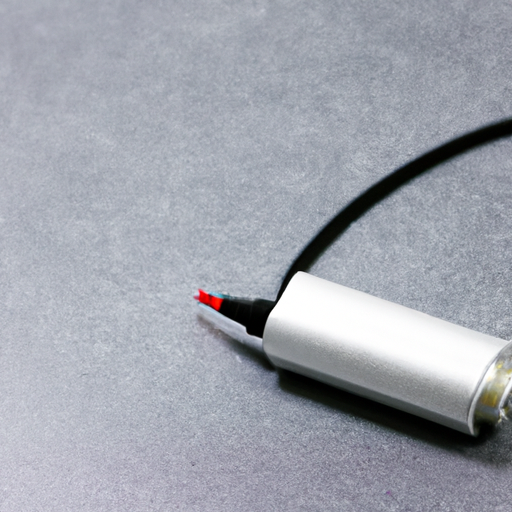
LED transmitters, also known as light-emitting diode transmitters, are a type of optical communication technology that uses light to transmit data. This technology has gained popularity in recent years due to its high data transfer rates, low power consumption, and immunity to electromagnetic interference. In this article, we will explore how LED transmitters work, their applications, and the advantages they offer over traditional communication technologies.LED transmitters work by converting electrical signals into light signals that are then transmitted through the air to a receiver. The transmitter consists of an LED, a driver circuit, and a modulator. The LED is the light source that emits the light signals, while the driver circuit controls the current flowing through the LED to modulate the intensity of the light. The modulator is responsible for encoding the data onto the light signal by varying the intensity of the light in accordance with the data being transmitted.When data is to be transmitted, the driver circuit modulates the current flowing through the LED based on the input data. This modulation causes the intensity of the light emitted by the LED to vary, creating a light signal that carries the data. The modulated light signal is then transmitted through the air to a receiver, where it is detected and converted back into electrical signals for processing.LED transmitters are typically used in free-space optical communication systems, where data is transmitted through the air over short distances. These systems are commonly used in applications such as indoor wireless communication, point-to-point communication, and data transmission in environments where radio frequency communication is not feasible or secure.One of the key advantages of LED transmitters is their high data transfer rates. LED transmitters can achieve data transfer rates of up to several gigabits per second, making them ideal for applications that require high-speed data transmission. Additionally, LED transmitters have low power consumption compared to traditional communication technologies such as radio frequency communication, making them more energy-efficient and cost-effective.Another advantage of LED transmitters is their immunity to electromagnetic interference. Since LED transmitters use light to transmit data, they are not affected by electromagnetic interference from other electronic devices or sources. This makes LED transmitters more reliable and secure for data transmission in environments where electromagnetic interference is a concern.In addition to their high data transfer rates and immunity to electromagnetic interference, LED transmitters also offer a compact and lightweight design. LED transmitters are small in size and can be easily integrated into portable devices such as smartphones, tablets, and wearable technology. This makes LED transmitters ideal for applications that require compact and lightweight communication solutions.Overall, LED transmitters are a versatile and efficient technology for data transmission. With their high data transfer rates, low power consumption, immunity to electromagnetic interference, and compact design, LED transmitters are well-suited for a wide range of applications in wireless communication, networking, and data transmission. As the demand for high-speed and reliable communication technologies continues to grow, LED transmitters are expected to play an increasingly important role in the future of optical communication.
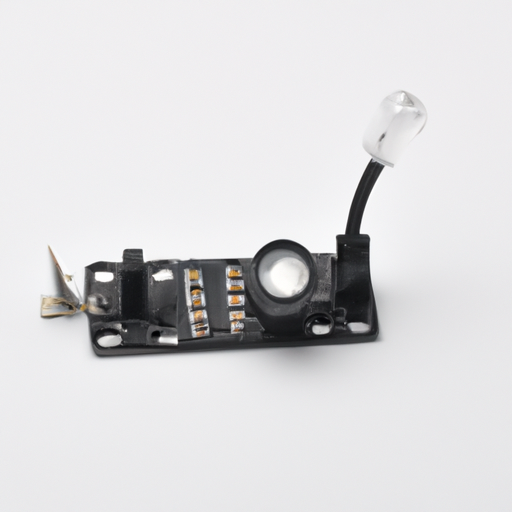
LED transmitters are becoming increasingly popular in various industries due to their energy efficiency, long lifespan, and versatility. These devices are used to transmit data wirelessly using light signals, making them a valuable tool for applications such as indoor positioning systems, Li-Fi technology, and smart lighting solutions. In this article, we will explore some of the most common LED transmitter models on the market today.1. Luminus Devices XNOVA CubeThe Luminus Devices XNOVA Cube is a high-power LED transmitter that is commonly used in Li-Fi applications. This compact and efficient device can transmit data at speeds of up to 10 Gbps, making it ideal for high-speed communication in indoor environments. The XNOVA Cube is also compatible with standard LED drivers, making it easy to integrate into existing lighting systems.2. Osram Opto Semiconductors Oslon Black FlatThe Osram Opto Semiconductors Oslon Black Flat is a popular LED transmitter for indoor positioning systems. This device features a flat design that allows for precise beam shaping, making it ideal for applications where accurate positioning is required. The Oslon Black Flat also offers high efficiency and reliability, making it a top choice for indoor navigation and tracking solutions.3. Cree XLamp XP-LThe Cree XLamp XP-L is a versatile LED transmitter that is commonly used in smart lighting solutions. This high-power device offers excellent color rendering and brightness, making it ideal for applications such as architectural lighting, stage lighting, and horticultural lighting. The XLamp XP-L is also available in a range of color temperatures and beam angles, allowing for customization to suit specific lighting needs.4. Nichia Corporation NF2W757G-MTThe Nichia Corporation NF2W757G-MT is a popular LED transmitter for automotive applications. This device features high brightness and efficiency, making it ideal for use in headlights, taillights, and interior lighting. The NF2W757G-MT also offers excellent thermal management and reliability, making it a top choice for automotive manufacturers looking to incorporate LED technology into their vehicles.5. Seoul Semiconductor SunLike SeriesThe Seoul Semiconductor SunLike Series is a cutting-edge LED transmitter that is designed to mimic natural sunlight. This innovative technology offers a full spectrum of light that is similar to sunlight, making it ideal for applications where color accuracy and visual comfort are important. The SunLike Series is also highly efficient and long-lasting, making it a top choice for applications such as healthcare lighting, retail lighting, and museum lighting.In conclusion, LED transmitters are a valuable tool for a wide range of applications, from indoor positioning systems to smart lighting solutions. The models mentioned in this article are just a few examples of the many LED transmitters available on the market today. As technology continues to advance, we can expect to see even more innovative and efficient LED transmitter models in the future.
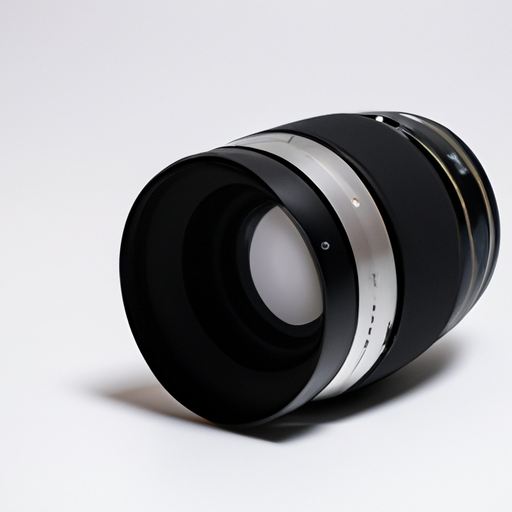
Lenses are an essential component of many optical devices, including cameras, microscopes, telescopes, and eyeglasses. They are used to focus light and create clear images by bending and refracting light rays. There are many different types of lenses available on the market, each with its own unique properties and applications. In this article, we will explore some of the most popular lens product types and their uses.1. Camera LensesCamera lenses are perhaps the most well-known type of lens, as they are used in a wide range of photography and videography applications. There are several different types of camera lenses, each with its own specific purpose. Some of the most popular types of camera lenses include:- Prime Lenses: Prime lenses have a fixed focal length, meaning they cannot zoom in or out. They are known for their sharp image quality and wide aperture, making them ideal for low-light photography and portraits.- Zoom Lenses: Zoom lenses have a variable focal length, allowing photographers to zoom in and out to capture different perspectives without changing lenses. They are versatile and convenient for a wide range of shooting situations.- Wide-Angle Lenses: Wide-angle lenses have a shorter focal length than standard lenses, allowing them to capture a wider field of view. They are commonly used for landscape photography and architectural shots.- Telephoto Lenses: Telephoto lenses have a longer focal length than standard lenses, allowing them to capture distant subjects with clarity. They are popular for sports and wildlife photography.2. Microscope LensesMicroscope lenses are used in microscopes to magnify tiny objects and make them visible to the human eye. There are several different types of microscope lenses, each with its own magnification capabilities and optical properties. Some of the most common types of microscope lenses include:- Objective Lenses: Objective lenses are located at the bottom of the microscope and are responsible for magnifying the specimen. They come in various magnification powers, ranging from low to high.- Eyepiece Lenses: Eyepiece lenses are located at the top of the microscope and are used to further magnify the image produced by the objective lens. They typically have a fixed magnification power.- Condenser Lenses: Condenser lenses are located beneath the stage of the microscope and are used to focus light onto the specimen. They help improve the contrast and clarity of the image.3. Telescope LensesTelescope lenses are used in telescopes to magnify distant objects and make them visible to the observer. There are several different types of telescope lenses, each with its own unique properties and applications. Some of the most popular types of telescope lenses include:- Refractor Lenses: Refractor lenses use a series of glass lenses to bend and refract light, creating clear images of distant objects. They are known for their sharp image quality and are popular among amateur astronomers.- Reflector Lenses: Reflector lenses use a series of mirrors to reflect and focus light, creating clear images of distant objects. They are known for their large aperture and are popular among professional astronomers.- Catadioptric Lenses: Catadioptric lenses combine both refractor and reflector elements to create clear images of distant objects. They are known for their compact design and are popular among astrophotographers.4. Eyeglass LensesEyeglass lenses are used in eyeglasses to correct vision problems such as nearsightedness, farsightedness, and astigmatism. There are several different types of eyeglass lenses, each with its own unique properties and applications. Some of the most popular types of eyeglass lenses include:- Single Vision Lenses: Single vision lenses have a uniform prescription power across the entire lens, making them ideal for correcting simple vision problems.- Bifocal Lenses: Bifocal lenses have two distinct areas of prescription power, allowing wearers to see clearly at both near and far distances. They are popular among individuals with presbyopia.- Progressive Lenses: Progressive lenses have a gradual transition of prescription power from the top of the lens to the bottom, allowing wearers to see clearly at all distances without the need for a visible line.In conclusion, there are many different types of lens product types available on the market, each with its own unique properties and applications. Whether you are a photographer, scientist, astronomer, or eyeglass wearer, there is a lens type that is perfect for your needs. By understanding the different types of lenses and their uses, you can make an informed decision when selecting a lens for your optical device.

Display border is a company that specializes in providing high-quality display solutions for businesses and individuals. With a wide range of products and services, Display border has established itself as a leader in the display market. In order to maintain its competitive edge and ensure customer satisfaction, Display border has implemented a number of market policies that guide its operations and interactions with customers. These market policies are designed to promote transparency, fairness, and efficiency in the marketplace.One of the key market policies that Display border has in place is a commitment to providing high-quality products and services. Display border understands that in order to succeed in the competitive display market, it must offer products that meet the highest standards of quality. To this end, Display border works with reputable suppliers and manufacturers to ensure that its products are of the highest quality. In addition, Display border has a team of experienced professionals who are dedicated to providing excellent customer service and support. This commitment to quality helps to build trust and loyalty among customers, and sets Display border apart from its competitors.Another important market policy that Display border follows is a commitment to fair pricing. Display border understands that pricing is a key factor for customers when making purchasing decisions, and strives to offer competitive prices for its products and services. Display border regularly monitors market trends and adjusts its pricing accordingly to ensure that its products remain affordable and accessible to customers. In addition, Display border offers discounts and promotions to help customers save money on their display purchases. By offering fair pricing, Display border is able to attract and retain customers, and build long-term relationships with them.In addition to quality products and fair pricing, Display border also has a strong commitment to customer satisfaction. Display border understands that happy customers are the key to success in the display market, and works hard to ensure that every customer has a positive experience with the company. Display border offers a range of services to help customers with their display needs, including installation, maintenance, and repair services. In addition, Display border has a dedicated customer service team that is available to assist customers with any questions or concerns they may have. By providing excellent customer service, Display border is able to build trust and loyalty among its customers, and differentiate itself from its competitors.Overall, Display border's market policies are designed to promote transparency, fairness, and efficiency in the marketplace. By offering high-quality products, fair pricing, and excellent customer service, Display border is able to attract and retain customers, and build a strong reputation in the display market. Display border's commitment to these market policies sets it apart from its competitors, and positions it for continued success in the future.

The purchase price of the latest Display module varies depending on the brand, specifications, and features. However, on average, the cost of a high-quality display module can range from $200 to $1000 or more. In this article, we will explore the latest trends in display technology, the key features to consider when purchasing a display module, and the factors that influence the price of these devices.Display technology has evolved significantly over the years, with manufacturers constantly pushing the boundaries of what is possible. The latest display modules offer stunning visuals, vibrant colors, and high resolutions that make them ideal for a wide range of applications, from gaming and entertainment to professional use in industries such as healthcare, education, and design.One of the key features to consider when purchasing a display module is the resolution. Higher resolutions, such as 4K and 8K, offer sharper images and more detailed visuals, making them ideal for tasks that require precision and clarity. In addition to resolution, other important factors to consider include refresh rate, response time, color accuracy, and viewing angles.The price of a display module is influenced by a variety of factors, including the brand, size, resolution, and features. High-end display modules from well-known brands such as Samsung, LG, and Dell tend to be more expensive due to their reputation for quality and reliability. Larger display modules with higher resolutions and advanced features also command a higher price tag.In addition to the initial purchase price, it is important to consider the total cost of ownership when buying a display module. This includes factors such as energy consumption, maintenance costs, and warranty coverage. Some display modules may be more energy-efficient than others, which can result in long-term cost savings. It is also important to factor in the cost of any additional accessories or peripherals that may be required, such as cables, mounts, or calibration tools.When shopping for a display module, it is important to do thorough research and compare different options to find the best value for your needs. Reading reviews and customer feedback can help you make an informed decision and avoid potential pitfalls. It is also a good idea to visit a physical store to see the display module in person and test its performance before making a purchase.In conclusion, the purchase price of the latest display module can vary depending on a variety of factors, including brand, size, resolution, and features. By carefully considering these factors and doing thorough research, you can find a display module that meets your needs and budget. Whether you are a gamer, designer, or professional user, investing in a high-quality display module can enhance your viewing experience and productivity.
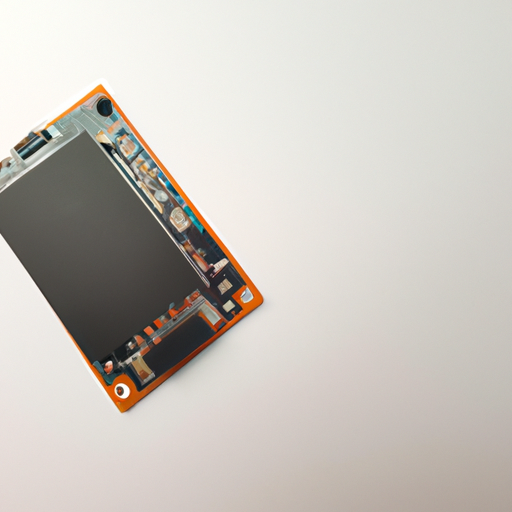
The Display module is an essential component of any electronic device, as it is responsible for presenting information to the user in a visual format. This module contains several key components and modules that work together to create a seamless and engaging user experience. In this article, we will explore the various components and modules that make up the Display module, and how they work together to provide a high-quality display.One of the most important components of the Display module is the display screen itself. The display screen is the physical surface on which images and text are displayed, and it comes in a variety of types and technologies. Some common types of display screens include LCD (Liquid Crystal Display), OLED (Organic Light Emitting Diode), and LED (Light Emitting Diode) screens. Each type of display screen has its own unique characteristics and advantages, and the choice of screen type will depend on the specific requirements of the device.Another key component of the Display module is the display driver. The display driver is responsible for controlling the display screen and sending the appropriate signals to display images and text. The display driver is typically a separate integrated circuit that is connected to the main processor of the device. The display driver communicates with the main processor to receive instructions on what to display, and then sends the appropriate signals to the display screen to create the desired image.In addition to the display screen and display driver, the Display module also contains various other components and modules that work together to create a high-quality display. One important component is the backlight, which provides the necessary illumination for the display screen. The backlight is typically a series of LEDs or fluorescent lights that are positioned behind the display screen to provide even and consistent lighting. The brightness and color temperature of the backlight can be adjusted to suit the ambient lighting conditions and user preferences.Another important component of the Display module is the touch screen controller. Touch screens are becoming increasingly popular in electronic devices, as they allow users to interact with the device by touching the display screen directly. The touch screen controller is responsible for detecting touch inputs and translating them into commands that the device can understand. The touch screen controller works in conjunction with the display driver to ensure that touch inputs are accurately registered and responded to.The Display module also contains various other components and modules that are essential for creating a high-quality display. These include the graphics processing unit (GPU), which is responsible for rendering images and graphics on the display screen, as well as the video processor, which is responsible for processing video signals and displaying video content. The Display module may also contain additional components such as a color calibration module, which ensures that colors are displayed accurately and consistently across the display screen.Overall, the Display module is a complex and essential component of any electronic device. It contains a variety of components and modules that work together to create a high-quality display that is engaging and user-friendly. By understanding the various components and modules that make up the Display module, device manufacturers can ensure that their products provide a superior display experience for users.
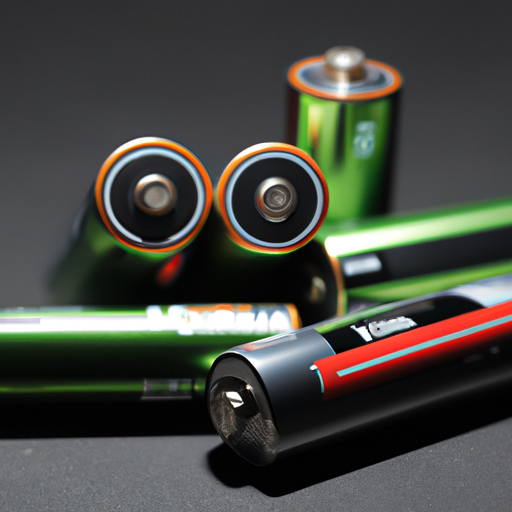
In recent years, there has been a growing trend towards non-charging battery products, also known as disposable or single-use batteries. These batteries are designed to be used once and then disposed of, rather than being recharged like traditional rechargeable batteries. While rechargeable batteries have been popular for their cost-effectiveness and environmental benefits, non-charging batteries offer a number of advantages that make them a compelling choice for many consumers.One of the key advantages of non-charging batteries is their convenience. Unlike rechargeable batteries, which require a charging station or device to recharge, non-charging batteries can be used straight out of the package. This makes them ideal for situations where recharging is not practical or possible, such as when traveling or in emergency situations. Non-charging batteries are also typically lighter and more compact than rechargeable batteries, making them easier to carry and store.Another advantage of non-charging batteries is their long shelf life. Rechargeable batteries can lose their charge over time, even when not in use, which can be frustrating for consumers who rely on them for important devices like smoke alarms or remote controls. Non-charging batteries, on the other hand, have a much longer shelf life and can be stored for extended periods of time without losing their charge. This makes them a reliable choice for devices that are used infrequently or in emergency situations.Non-charging batteries are also more cost-effective than rechargeable batteries in the short term. While rechargeable batteries may have a higher upfront cost, they can be recharged hundreds of times, making them a more economical choice over the long term. However, for consumers who only use batteries occasionally or for specific devices, non-charging batteries can be a more cost-effective option. Additionally, non-charging batteries are often sold in multi-packs, which can further reduce their cost per battery.One of the most compelling advantages of non-charging batteries is their environmental impact. Rechargeable batteries contain toxic chemicals like lead and cadmium, which can be harmful to the environment if not disposed of properly. While rechargeable batteries can be recycled, many consumers do not take the time to do so, leading to environmental pollution. Non-charging batteries, on the other hand, are typically made from less harmful materials and can be safely disposed of in regular household waste. This makes them a more environmentally friendly choice for consumers who are concerned about their carbon footprint.In addition to their environmental benefits, non-charging batteries are also more convenient for consumers who do not have access to recycling facilities or who do not want to deal with the hassle of recycling rechargeable batteries. By using non-charging batteries, consumers can simply dispose of them in the trash without worrying about the environmental impact. This can be especially important for consumers in rural areas or developing countries where recycling facilities may be limited or non-existent.Overall, non-charging batteries offer a number of advantages that make them a compelling choice for many consumers. From their convenience and long shelf life to their cost-effectiveness and environmental impact, non-charging batteries provide a reliable and practical power source for a wide range of devices. While rechargeable batteries may still be the preferred choice for some consumers, non-charging batteries offer a viable alternative that should not be overlooked.